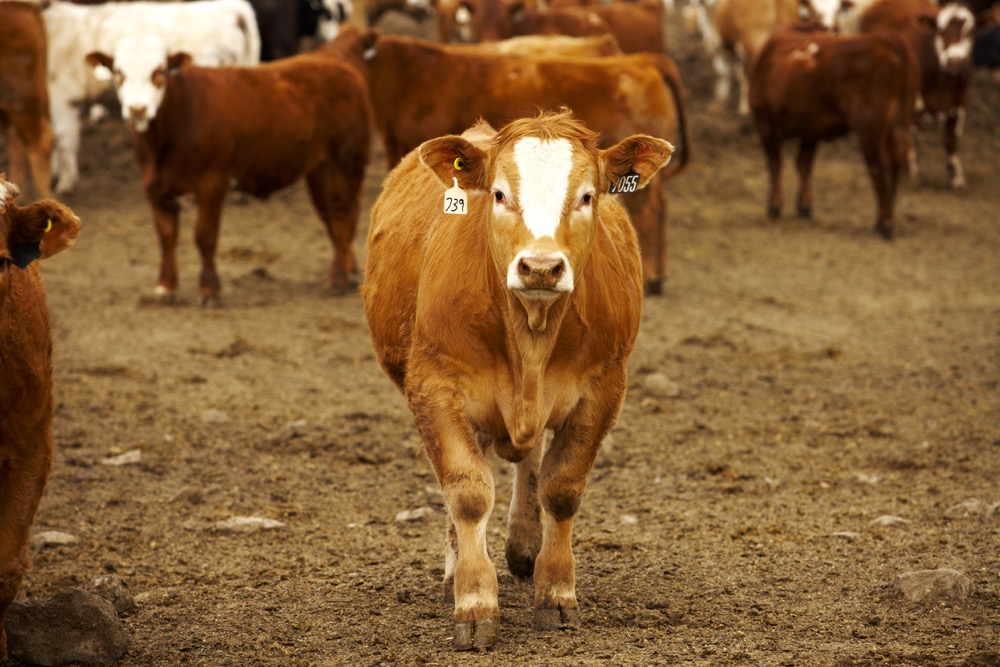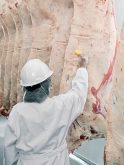Over two decades, internal parasite control in cattle on western Canadian pastures moved from “not necessary” to “routine” for progressive cow-calf producers.
While the presence of internal parasites in cattle is often inapparent, removing the economic burden they represent is now an integral component of health management in many herds.
Reasons for the shift toward incorporation of internal parasite control in health management programs include:
- Economic studies that clearly demonstrated deworming pays.
- Evidence that parasite resistance to all deworming products can emerge, rendering haphazard approaches to parasite control unsustainable.
- Critical evaluation of factors related to the association between reproductive efficiency and parasitism in beef herds.
- A better understanding of all factors affecting immunity and health of the beef cow and growing calf.
- Recognition that cattle dewormed in an organized and rational manner through the year produce more milk, make better use of summer range and winter forage, develop stronger immune systems, maintain better body condition scores, and exhibit improved reproductive performance, especially as it relates to fertility of replacement heifers.
Read Also

Body condition, nutrition and vaccination for brood cows
One of the remarkable events of the past century related to ranching has been the genetic evolution of brood cows….
Through sound deworming practices, producers have an opportunity to improve weaning weights and the reproductive potential of replacement heifers. Veterinarians understand what deworming products are available and where they are best put to use. There is also the realization that haphazard, unstructured use of deworming products grows increasingly unacceptable to consumers and society.
To capitalize on the greatest return through deworming, timing of treatment becomes very important. An underlying goal of sustainable parasite control is to limit the economic consequences of internal parasitism, without trying to kill every worm.
Most deworming programs are based on the reality that infection risk increases when cattle are turned onto spring pastures. With some parasite species, Ostertagia being a prime example, the parasites become hypobiotic (nonactive) and encyst in the abomasum during cold or dry seasons and re-emerge when conditions for their survival improve. The rate and timing of emergence governs the clinical impact of parasitism.
It is generally agreed that Ostertagia ostertagi, or the brown stomach worm, is the primary nematode parasite causing production losses in mature cows on ranches and farms in North America. Ostertagia can cause significant production losses, severe disease and even death in all classes of cattle. Cooperia, a second important parasite species, often becomes the predominant species in calves. Haemonchus, a third species, becomes a serious problem under certain conditions.
Producers often consider deworming calves, grass yearlings and replacement heifers a higher priority than cows. Those who treat cows regularly tend to decide how and when to treat based on convenience, tradition and cost, rather than on outcomes. Treating cows often takes place when they are in the chute, rather than at strategic times based on biological factors. The ideal sits somewhere between what is optimal and when ranchers can get it done.
Low-quality forages amplify the effects of parasitism. As well, the parasite load is not uniformly spread across a cow herd. It has been shown that 20 per cent of cows in a herd may harbour 80 per cent of the parasites and that clinical signs of parasitism often vary between animals.
The number of approved products presently available has made the process of deworming easier. Pour-ons, injectables, drenches, and feed additives have significantly extended the anti-parasitic formulary and added important options for inclusion in strategic deworming programs. It is advisable that producers stick with products approved for use in Canada and avoid cheaper imported generics often imported under “own use” provisions presently accessible to producers.
There is no single product class effective against all internal and external parasites. Veterinarians are a valuable resource in tailoring parasite control programs for producers. Integrating choices around the right product administered at the right time for the right reason transformed parasite control into a planned component of health management programs. Some of the choices include:
- Eprinomectin (injectable): The first extended-release injectable cattle dewormer offering season-long parasite control. The product is now available in Canada. Eprinomectin offers cattle producers the option of a single treatment at turnout with effects that last up to 150 days. Theraphase Technology creates an initial therapeutic peak of eprinomectin quickly following injection with a second burst at about 70 days post-injection. Superior average daily gains in calves, grass yearlings and replacement heifers have been reported over the entire grazing period.
- Ivermectin (pour-on, injectable): The original macrocyclic lactone class of endectocide. Effective pour-on formulations changed the face of internal and external parasite control. Wide-scale, indiscriminate use of systemic pour-ons for all forms of parasite control has attributed to emergence of resistance in some areas. Import of inferior, non-approved U.S. generics by producers under Canadian “Own Use” provisions has not helped.
- Fenbendazole (solution, feed formulation): Feed formulations containing fenbendazole administered in complete feed so cattle consume a dosage of five mg fenbendazole per kilogram of body weight in a single feeding or intermittently over six days. Canadian approval of feed formulations for cattle added a new approach to parasite control in Canada.
- Cydectin (pour-on, injectable): contains moxidectin.
- Synanthic (oral suspension): contains oxfendazole.
- Valbazen(oral suspension): for use in cattle, sheep, and goats for the removal and control of liver flukes, tapeworms, stomach worms, intestinal worms, and lungworms.
- Dectomax (pour-on, injectable): Contains doramectin for broad-spectrum control of internal and external parasites.

















